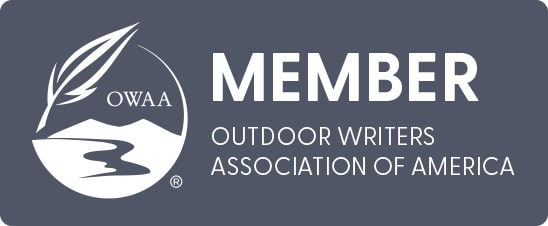
Deep Dive: What’s Changing & Why It Matters (and What about Doctors of Strategic Leadership)
What the Policy Shift Entails
The U.S. Department of Education (DOE) is moving forward with a significant redefinition of what constitutes a “professional degree” under federal student-loan rules. Under the sweeping One Big Beautiful Bill Act signed in July 2025, graduate students will face a lifetime borrowing cap of $100,000, while students in programs classified as “professional” will qualify for an aggregate cap of $200,000. (USA Today)
The definition of “professional degree” is being narrowed: programs previously eligible for higher loan limits may now be excluded. The DOE’s draft definition draws on criteria such as:
Completion of academic requirements for beginning practice
Generally at the doctoral (or equivalent) level and at least six years of post-secondary study (including prior undergraduate work)
Typically requiring professional licensure for practice
Falling into specific CIP code categories tied to historically recognized professions.
Fields now recognized in the professional degree category include: medicine (M.D.), pharmacy (Pharm.D.), dentistry (D.D.S./D.M.D.), optometry (O.D.), veterinary medicine (D.V.M.), osteopathic medicine (D.O.), podiatry, chiropractic, theology, and clinical psychology. Newsweek, USA Today
But several key fields are being excluded under the proposed rule: advanced nursing (MSN/DNP), physician assistant, physical therapy, audiology, public health, social work, education master’s programs, and other allied-health/education streams.
The change is set to take effect July 1, 2026.
Who Is Affected & How
1. Graduate students in formerly “professional” degrees but now excluded
For example, a nurse pursuing a Doctor of Nursing Practice (DNP) or advanced credential might now be categorized under the lower graduate-limit cap ($100K lifetime) instead of the higher professional cap ($200K lifetime). This shift reduces maximum borrowing capacity by as much as 50%. Hawaii Ana, Newsweek
2. Programs in high-demand sectors
Fields like nursing and public health, already facing workforce shortages, face added financial obstacles. According to the American Nurses Association, there are more than 260,000 students enrolled in BSN programs and roughly 42,000 in associate-degree nursing programs. (Newsweek, USA Today) Because many advanced roles (e.g., nurse practitioners, educators, administrators) require expensive graduate education, lower loan limits may deter enrollment.
3. Institutional and workforce ripple effects
Graduate nursing programs may shrink or raise tuition to compensate for reduced federal aid access.
Fewer advanced-practice nurses (APRNs) means potential gaps in primary care and rural health services. As one nursing-education researcher put it: excluding nursing “will reduce the numbers of new nurse graduates … increasing labor costs and a growing reliance on foreign-educated nurses.” Newsweek, USA Today
Some professional associations argue this redefinition undervalues entire disciplines, especially those with female-dominated workforces or strong public-service orientation. The Association of Schools and Programs of Public Health warned excluding public-health degrees “sends an alarming signal; risks undermining the nation’s ability to prepare frontline practitioners.” ASPPH
Why Policy Makers Say This Shift Makes Sense
The DOE argues that the previous “professional degree” category was too broad and inconsistent, enabling high borrowing without commensurate outcomes. According to DOE, the consensus-based definition has been consistent for decades. Newsweek, USA Today
According to the USA Today article, proponents “say narrowing eligibility focuses higher-limit debt on programs with longer training, more intense licensure, and higher-earning potential, reducing long-term student-loan liability for both borrowers and taxpayers.”
Why Critics Are Raising Red Flags
Many argue the definition is arbitrary or misaligned with modern workforce realities: advanced nursing, social work, and public-health roles often require licensure, extensive training, and high professional responsibility, yet they are excluded.
There are fears this reduces access to advanced degrees for historically marginalized populations and rural communities where cost is a major barrier.
Workforce experts warn that reducing federal aid eligibility for these areas may worsen existing shortages in healthcare, social services, and education.
What Students, Educators & Institutions Should Know
Check category eligibility: If you’re entering or advising a program in nursing, public health, social work, therapy, education, or allied health, verify whether your program is considered “professional” under the upcoming rule.
Plan financing accordingly: With lower caps on borrowing, students may need to rely more on scholarships, state aid, employer tuition assistance or alternate funding models.
Institutions should prepare: Schools offering programs now excluded may need to adjust tuition strategies, ramp up fundraising, or redesign program bundles to maintain accessibility.
Advocacy window open: Since the rule is not yet final, professional associations and stakeholders still have time to comment during the notice-and-comment process. Newsweek, USA Today
Bottom Line
This is more than a technical regulatory change. The federal definition of “professional degree” is shifting, and with it, who gets access to higher federal loan limits and, by extension, who can afford advanced training. Fields like nursing, public health, social work and education may face significant financing hurdles at a time when their services are more needed than ever. The downstream effects will ripple across academia, workforce planning, healthcare delivery and community capacity. Newsweek, USA Today
Which Degrees Are Now Excluded
Certain high-demand fields have been left off the new “professional degree” list. They include:
By contrast, the regulatory list of programs still defined as “professional” includes medicine, law, pharmacy, dentistry, optometry, veterinary medicine, and other fields.
On a personal note, it begs to question what about the Doctor of Stargeic Leadership degree that I hold? I have written extensivley on professional degrees and you can read about them here.
Thankfully, I am finished with my degree but many of my collegues are not.
I think the bigger question is not just about the students that are currently enrolled but what about those that are applying for post-docs, positions in academia, promotions at their current employer and much more?
Are you or someone you know affected by these changes? Comment below or on my socials at @robertforto











